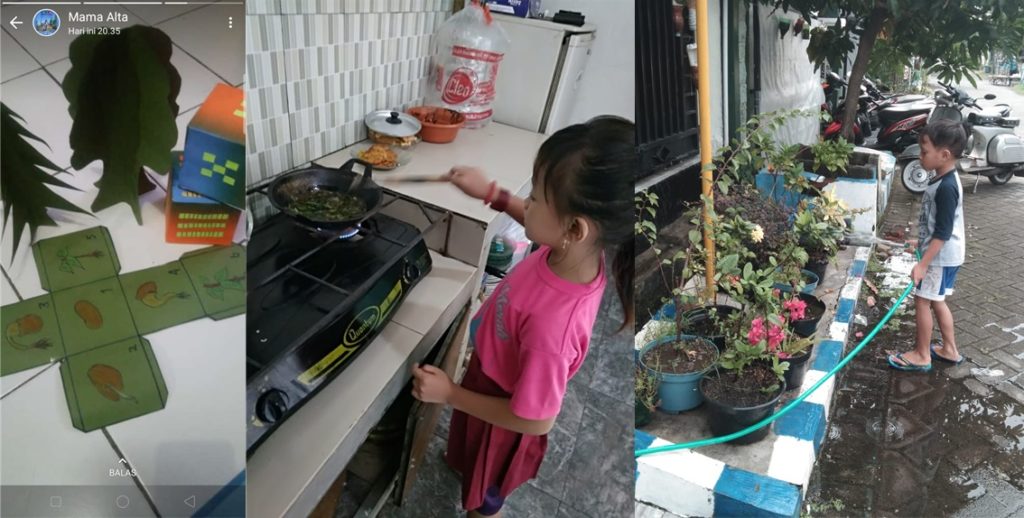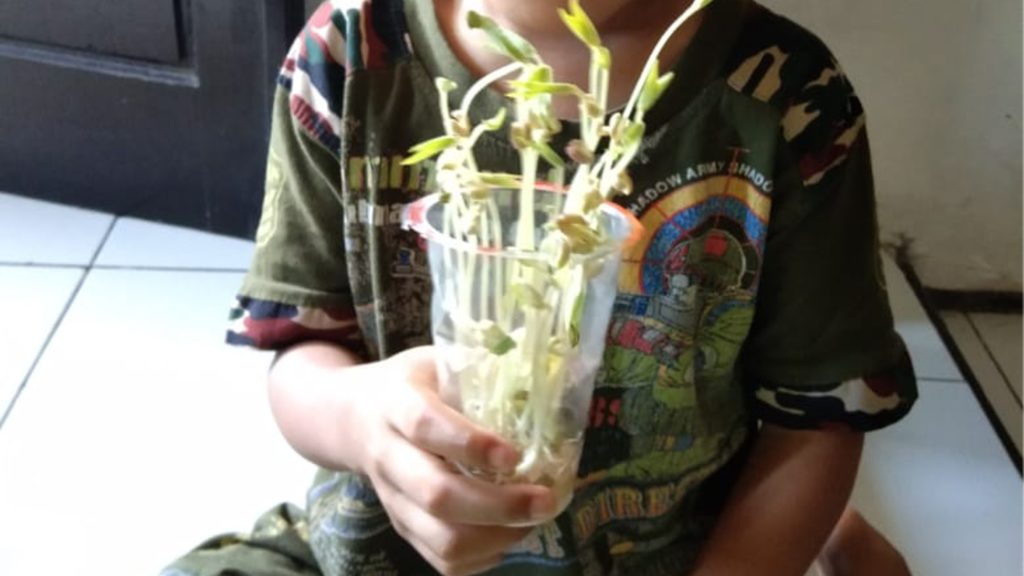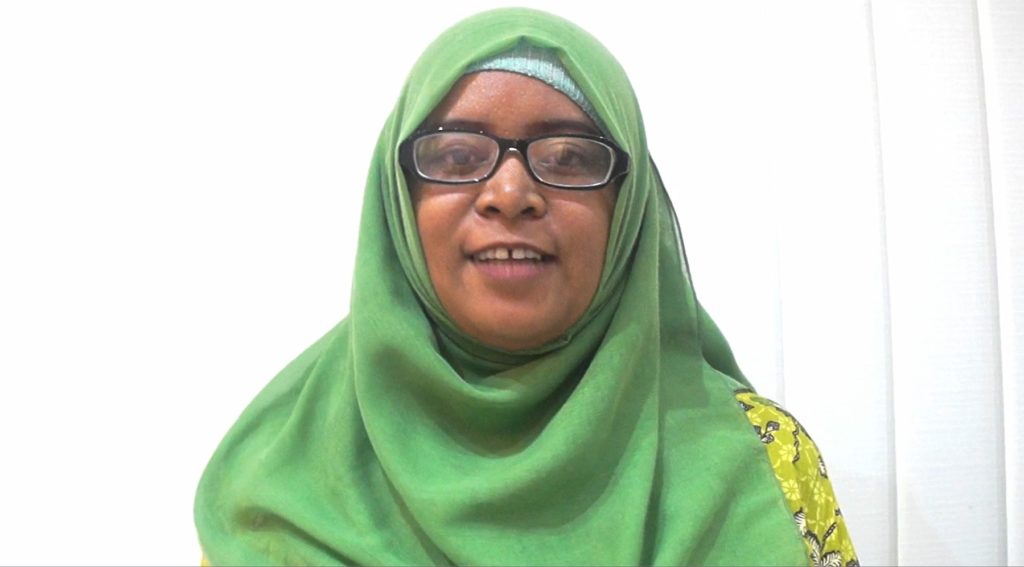
This has also happened to all students of SDN Ngampelsari state elementary school in Sidoarjo regency, East Java. The students have been learning from home since March 17, 2020, including the class of Nurul Ainia, S.Pd., a first-grade teacher at the school. Since her students started to study from home, the teacher, who is more familiarly known as Ms. Nia, has had to develop strategies to keep learning materials engaging and fun when to be used at home.
Ms. Nia takes a proactive approach to fostering collaboration with the students’ parents. “I try to schedule activities for students that don’t burden their parents. I started out by communicating first with their parents with the intention of discussing whether they object to the material I was going to give to the students or not,” she said.
She also communicates extensively with the class association, which consists of her students’ parents. According to Ms. Nia, there are some parents and students who do not have cellphones. So in order to send assignments via online, the class association is assigned to forward information about the tasks that children must complete while studying at home.
The first task is related to thematic material, in which parents are asked to assist their children with “Theme 7: Objects, Animals, and Plants around Me.”
“I ask the children at home to be accompanied by their parents, to take care of plants, such as sweeping the house yard that has plants on it, watering the plants, and weeding the plants. They can then take a picture of the results and send it to me,” said Ms. Nia.
If a parent does not have a cellphone to send pictures of their child’s activities, she or he needs to inform Ms. Nia or the association committee. In addition to learning the material in theme 7, the children learn to love and properly care for their plants.
Meanwhile, to teach her students to be able to understand how a plant grows, Ms. Nia asks the children to put soybean seeds in an empty glass that is lined with wet cotton. Children are asked to observe and report the growth of soybean seeds, from day one to day seven.
“I am amazed by the enthusiasm of the children in making the observation report on the soybean seed. There are written reports complete with pictures of its daily growth, some send photos, and some would even make videos. Everything is fully supported by their respective parents at home,” she said.

Regarding the current condition, in which children are required to study at home, Ms. Nia tries her best to give explanations that are easy for children to understand.
“I sent a video related to COVID-19 to the online parents’ group, and I asked the parents to explain it to their own children. Next, I assigned the children to make presentations which were videotaped and sent to me. For parents who don’t have smart phone to record and send videos, children can just draw and tell about it in their own words. The pictures can be taken later when the children enter school again,” she explained.
According to Ms. Nia, home learning during pandemic has a positive side to it . On the bright side, she is happy to see the collaboration of parents and children in doing assignments, although with a lot of effort and challenges for teachers and parents. For example, some parents do not have cellphones to support online learning. There are also some parents who are still working, so they cannot directly assist their children.
“In the past, there were maybe some parents who seem to not care about their child’s education; what’s important is that the child goes to school, and that’s done. However, now parents realize how their children really need parental assistance in learning at home,” she said.
Ms. Nia also hopes that this pandemic will end soon so that activities and everything else can go back to normal again, and children can go back to school.







